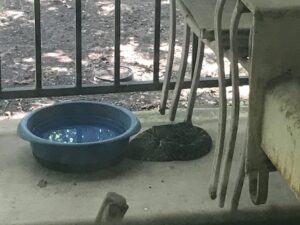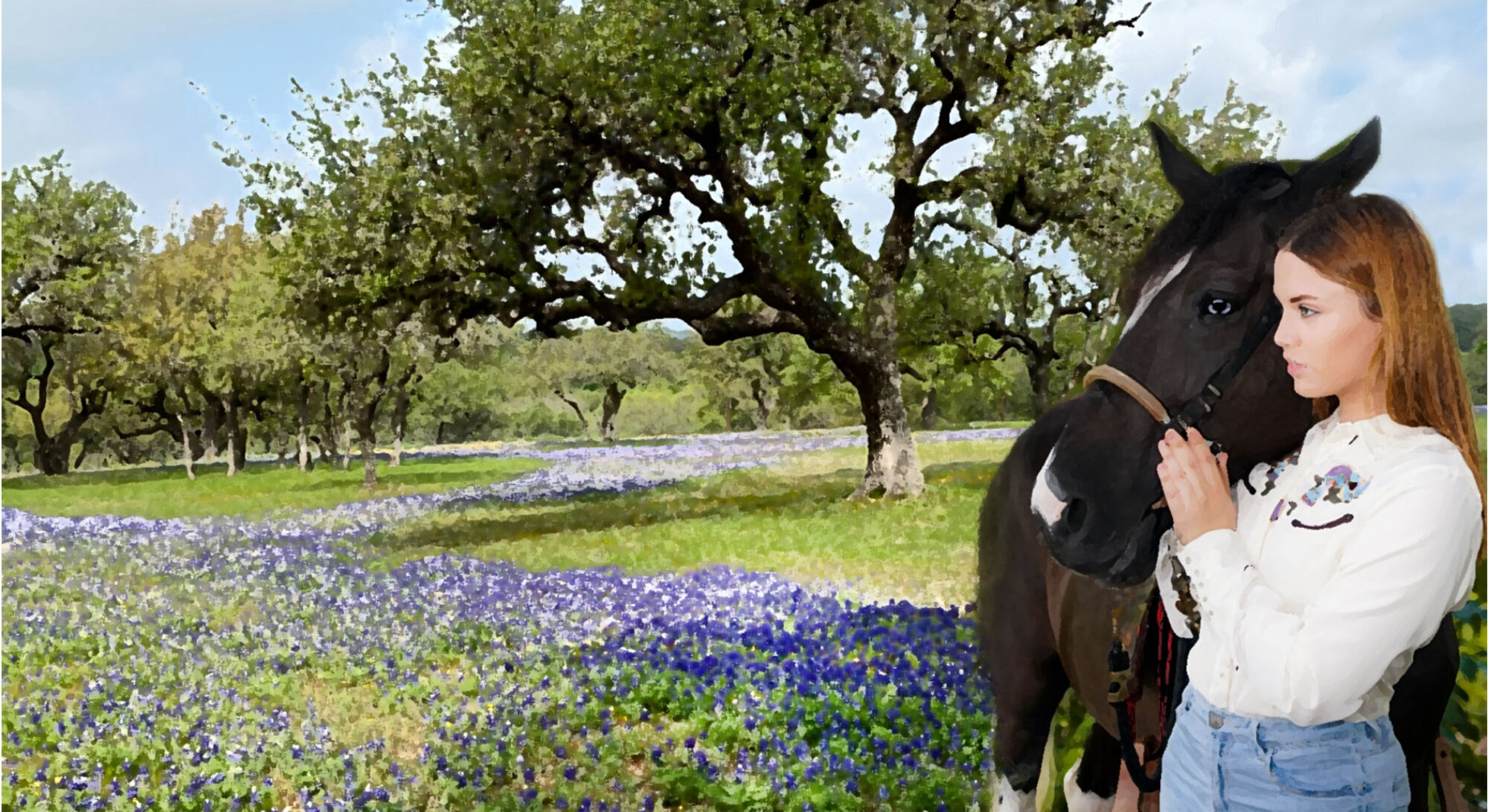 In early July, I filled the birdbath and an old dog dish on the back porch with water for the birds and squirrels.
In early July, I filled the birdbath and an old dog dish on the back porch with water for the birds and squirrels.
Later, I remembered my friend Nancy from Dallas who created a little concrete pond in her back yard to provide water for wild creatures. An unwanted snake immediately settled in, and she ended up killing it. I hoped I wouldn’t be faced with a similar problem. The birds came on the second day. The following day a creature appeared next to the water dish on the porch, looking like a deflated bicycle innertube or a dark crumpled chiffon headscarf. I figured it had to be a snake. He didn’t move, not one muscle. He appeared to be dead. I texted a snapshot to a family member who responded with one word: “Rattlesnake.”
GULP!
I patiently gave the snake plenty of time to leave, but he didn’t. Finally he disappeared, but then I could see that a dark mat on the porch was newly-tented. I feared the snake was hiding under the mat. Reluctantly, I called one of the local snake wranglers… I’ll call him Jack. I say “reluctantly” because I feared he would kill him. Snakes, even poisonous ones are quite useful. For one thing, they keep the mice and rat population down, especially useful in neighborhoods where many feed wildlife.
Jack wore a red shirt, jeans, western boots and a straw cowboy hat. He was older than I had anticipated but was quite fit and very professional, not to mention utterly fearless. He came empty-handed. After fussing at me for not calling him right away, he set me straight: The wranglers need to know about every snake right away, even garter and other non-poisonous snakes. He would relocate the snake to a local ranch after recording him in an extensive research project they’ve had ongoing for many years.
He stepped out onto the back porch and began looking for the snake, still unarmed, while I watched from the safety of the kitchen. I must admit I closed the screen securely, cutting off the wrangler’s escape if the snake threatened him. I considered taking a snapshot, but didn’t want to distract Jack. He quickly found the snake when he lifted a plastic container from the far corner.
“Whoa! A monster rattlesnake.”
Other than those 4 words, he was cool as a cucumber. He set the container down and went to get his things. I closed and locked the slider behind him. I ran to get our snake stick and propped it next to the door just in case the snake got away from him. Chocoholic was watching TV evening news and asked drolly if I were going to be backup. I glared at him. Any pitiful efforts on my part to subdue an angry rattlesnake would be a last ditch measure. We would all perish.
Jack returned with a big covered plastic bucket and a snake stick. It only took him a minute to get the predator into the bucket. The snake looked to me to be maybe 3 to 3.5 feet in length, but he was pissed and squirmy, and I can’t be sure.
Jack explained to me that: A rattlesnake that size could deliver 4-5 lethal doses of venom to adults; few Texans die from rattlesnake bites, but they do suffer; the toxin is strong enough to kill human tissue which will turn gangrenous and require multiple surgeries. The average hospital bill for rattlesnake bite approaches $50K for 20 or so doses of antivenom alone, not to mention the other pricey care. Cats and small dogs will not survive a bite.
Thank goodness we have such dedicated community volunteers. Kudos, gentlemen.
I should mention that my heroine in The Pig Parts Series has two encounters with rattlesnakes over the course of seven books, once in close quarters in a laundry room with her newborn baby nearby, and once during a major storm during her long, solitary odyssey in rural Mexico. She, of course, is much braver than I am.

